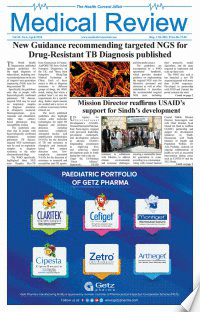By Rizwan Ahmed Kiani, Pakistan Institute of Medical Sciences, Islamabad
Thalassemia is an inherited genetic disorder associated with low hemoglobin due to defective production of hemoglobin and too much destruction of red blood cells. These are caused by mutation in ? or ? globin genes of haemoglobin. Haemoglobin production is affected in red blood cells, which leads to severe anemia. ?-thalassemia major (Cooley’s anemia) is caused by a genetic mutation in both genes that leads to absence or a severe decrease in ?-globin chain synthesis. Thalassemia minor or thalassemia trait caused by the mutation in only one gene. The word thalassemia, comes from Greek means ‘the sea ‘and ‘blood’, was made-up under the myth that these disorders were limited to the Mediterranean region. But ?-thalassemia carriers are reported prevalent in population of the world about 1.5%. It is evidence that 50-60,000 new born being added in world population with this serious defect. ?-thalassemia patients mostly prevalent in people of Mediterranean region, but also found in people of Africa, Italians and Greeks, Southeast Asia, the Middle East and the Indian subcontinent.
World Health Organization (WHO) declared that more than 60 countries having 150 million carrier population. It is reported that 3% to 10% of the world population bear a thalassemic gene. Pakistan has the high prevalence of children with ?-thalassemia in the world reported by different studies. The reason of such high ratio is due to social, cultural system and occurrence of consanguineous marriages. It is estimated that per year approximately 4000-5000 patients of ?-thalassemia major are born in our country. In 2003 the disease load was of up to 100,000 patients in the country and in the Northern areas of country about 83% of the children suffering from ?- thalassemia due to cousin and interfamily marriages.
Blood transfusions are frequently required to raise hemoglobin level of patients. Patients need 2 to 3 transfusions per month. Management of patients and transfusion of blood is guided by standard protocols provided by the British Committee for Standards in Hematology. ?-thalassemia major patients require blood transfusion throughout life to achieve the Hb level 9 to 10 g/dL, which is crucial to attain normal growth
Transmissions of infections due to regular blood transfusion are the major cause of morbidity and mortality in thalassemia patients. Due to multi blood transfusions chances of transmitting blood infections are also increased. However the risk of TTI transnmission has been reduced now due to screening of blood donors. This transmission of HIV, HCV and HBV is a major problem in developing countries where blood safety for transfusion is not maintained due to poor screening techniques and window period of disease. During window period the disease is not detectable by routine used diagnostic methods in blood bank. Only molecular diagnostic tools such as PCR and NAT can detect disease during window period.
In a recent study in Islamabad and Rawalpindi, a high prevalence of HCV (35%) was observed. The prevalence of hepatitis B infection among ?-thalassemia patients in this study was 2.2%. In the current study the prevalence of HIV in ?-thalassemia patients was estimated 0.6%. The disease prevalence can be reduced by creating awareness in people that before marriages especially interfamily marriages, a little care to undergo a screening test (Hb-electrophoresis) for diagnosis of thalassemia trait will save them and their future generation from a life time hurdle. Safe and sensitive blood bank donor screening is only solution to problem. These TTIs add more difficulties in the life of thalassemia patients as they are already fighting with a life threatening disorder. The Government of Pakistan should regularize blood transfusion system to improve blood banks screening system and efficacy.


